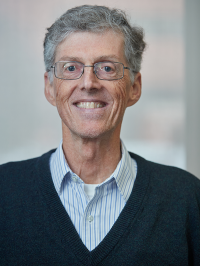
Associate Professor
Email: nollert@ou.edu
Office: Sarkeys Energy Center, Room T-227
Education
Ph.D. Chemical Engineering (1987)
Cornell University
B.S. Chemical Engineering (1981)
University of Virginia
Research Focus
Experience and Awards
About
Our research in the area of biomedical engineering seeks to understand the role of fluid mechanics in modulating the biology of blood cells and the cells of the blood vessel wall. There is good evidence that changes in blood flow characteristics may lead to the development of vascular disease. Only by studying vascular cells in a flowing system that closely mimics the environment found in the blood vessels can we understand how these cells behave in the body and why vascular disease occurs.
We are currently examining alterations in protein production in blood vessel wall cells that are exposed to fluid flow. We are also investigating how the response of cells to certain hormones may change if the cells are exposed to flow. In collaboration with investigators at the University of Oklahoma Health Sciences center, we are looking at the influence of fluid mechanics on the interaction between white blood cells and the blood vessel wall. These studies will determine the molecular mechanism of this interaction and may indicate new approaches for the development of drugs to prevent an inappropriate immune response.